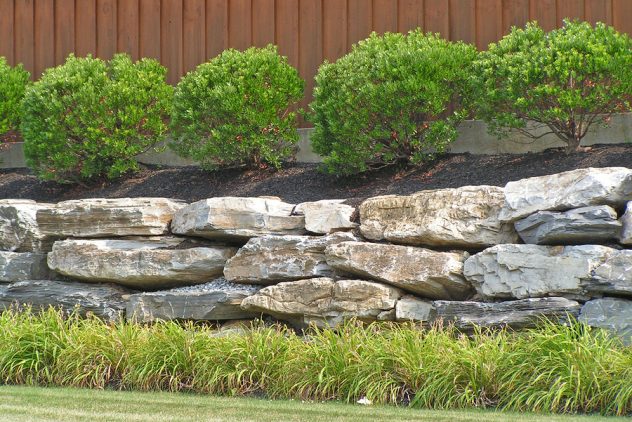Different Types of Retaining Walls
Retaining walls provide a means of adding height and visual interest to areas of your yard, or alternately, gaining greater use value from otherwise unusable vertical spaces like steep hillsides. They can also help to keep flat areas of your yard from becoming inundated by soil, debris, and so on rolling downhill.
In addition to having a variety of purposes, there are several different types of retaining walls to choose from. When you’re trying to get the most from your Rock Valley, Iowa backyard, it pays to know all you can about different types of retaining walls so you can decide which ones will best suit your purposes and your budget.
Gravity
This traditional type of retaining wall has been used to good effect for centuries and it is commonly used in yards. It relies on heavy materials like stones or pavers that are stacked to lean backward into the soil as a way to keep it contained. Such walls may or may not require a rigid footing for stability – it may depend on the height of the wall, the looseness of the soil, and whether or not the retaining wall is in front of a terraced area that will support landscaping or a patio, just for example.
Cantilevered
Fashioned in the shape of an inverted “T”, this type of retaining wall features a sturdy footing that extends to either side to help stabilize the vertical portion of the wall. It may or may not include buttresses to add further strength and stability to the structure as a means of stopping loose soil from sliding down into the yard. Often, cantilevered retaining walls are made from steel-reinforced concrete.
Sheet Piling
Soft, loose soil can be a major problem for Sioux Center, Iowa homeowners with hilly properties. For those that want to conserve space, sheet pile walls could be more economical than, say, cantilevered or gravity walls. These retaining walls are made from steel sheets, wood plank, or even vinyl that is buried at ground level, with about two-thirds below the soil and about a third extending up to create the wall.
This type of retaining wall is not ideal if a tall wall is needed, as it is not capable of withstanding the same pressure as gravity or cantilevered retaining walls. However, it can be a fairly economical alterative under the right conditions.
Anchored
Pretty much any type of retaining wall could become an anchored wall if anchors are added to hold the wall in place and keep it from collapsing outward under the pressure of the soil behind it. In order to create an anchored retaining wall, section of the wall must be attached to some kind cables that are anchored securely into the earth behind the wall.
Before deciding on the type of retaining wall that’s right for your yard and your usage requirements, it’s best to speak with your trusted landscaping specialist. Whether you’re adding height to sections of a flat yard or seeking to control a hillside, there is a retaining wall the will serve your purposes and suit your aesthetic.
